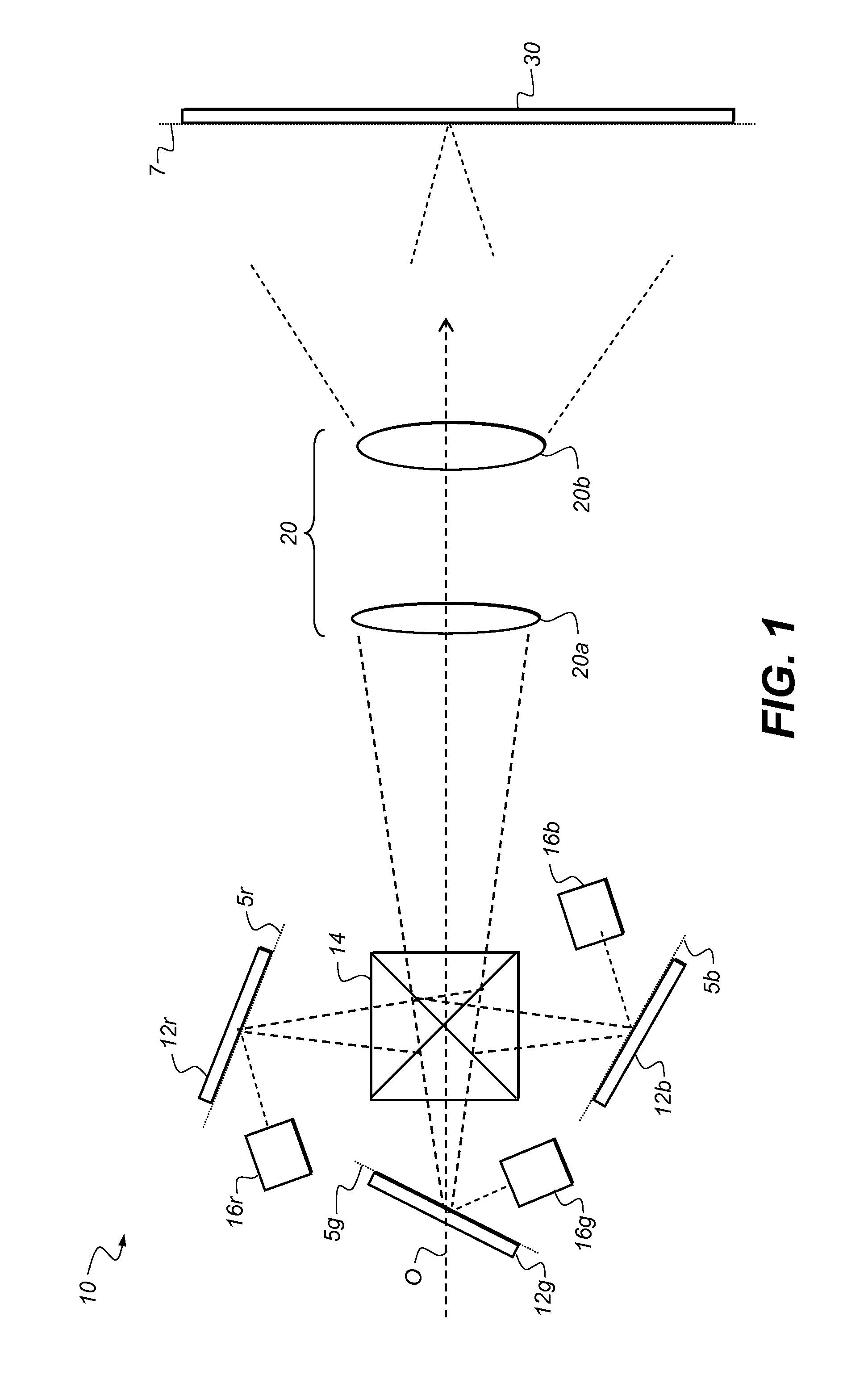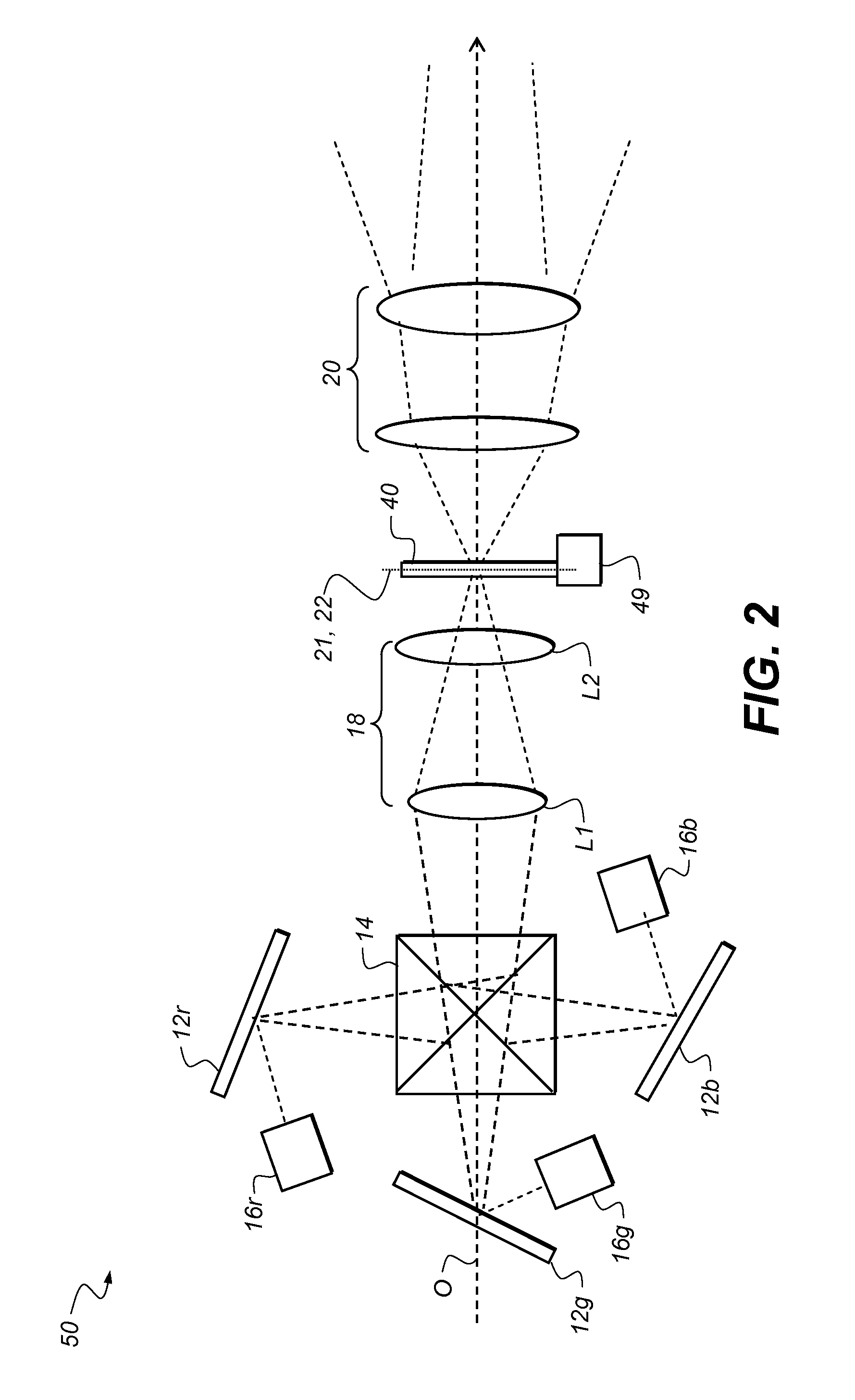Out-of-plane motion of speckle reduction element
a technology of speckle reduction and out-of-plane motion, which is applied in the direction of printers, instruments, cameras, etc., can solve the problems of thermal load and stress on these components, affecting the design of the projector, and the size and cost of the optical components, and achieves high brightness
- Summary
- Abstract
- Description
- Claims
- Application Information
AI Technical Summary
Benefits of technology
Problems solved by technology
Method used
Image
Examples
Embodiment Construction
[0034]For the detailed description that follows, it is to be understood that elements not specifically shown or described may take various forms well known to those skilled in the art. Figures shown and described herein are provided to illustrate principles of operation and component relationships along their respective optical paths according to embodiments of the present invention and may not show actual size or scale. Some exaggeration may be necessary in order to emphasize basic structural relationships or principles of operation. In some cases, components that normally lie in the optical path of the projection apparatus are not shown, in order to describe the operation of projection optics more clearly.
[0035]The invention is inclusive of combinations of the embodiments described herein. References to a particular embodiment and the like refer to features that are present in at least one embodiment of the invention. Separate references to “an embodiment” or “particular embodimen...
PUM
 Login to View More
Login to View More Abstract
Description
Claims
Application Information
 Login to View More
Login to View More - R&D
- Intellectual Property
- Life Sciences
- Materials
- Tech Scout
- Unparalleled Data Quality
- Higher Quality Content
- 60% Fewer Hallucinations
Browse by: Latest US Patents, China's latest patents, Technical Efficacy Thesaurus, Application Domain, Technology Topic, Popular Technical Reports.
© 2025 PatSnap. All rights reserved.Legal|Privacy policy|Modern Slavery Act Transparency Statement|Sitemap|About US| Contact US: help@patsnap.com



